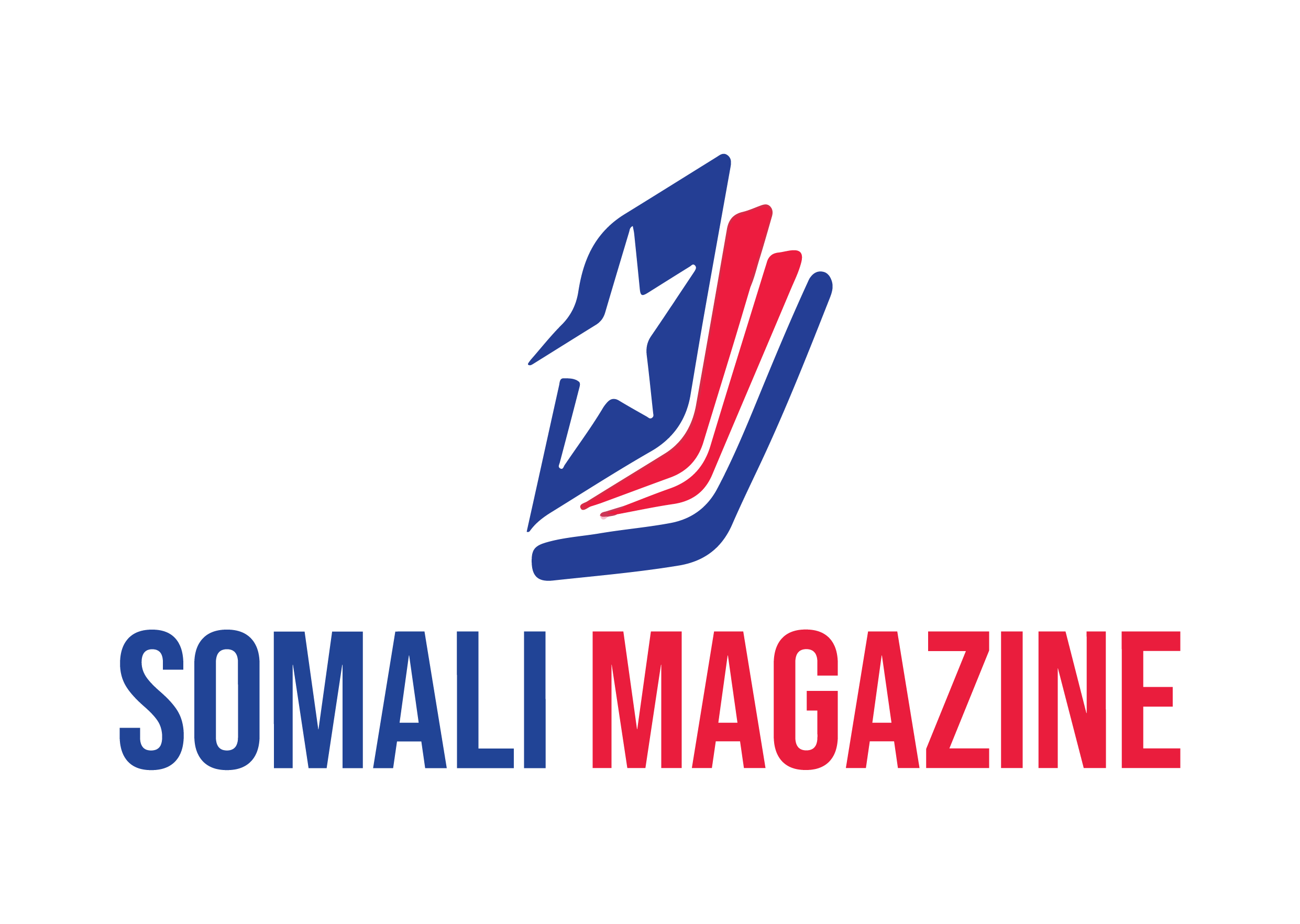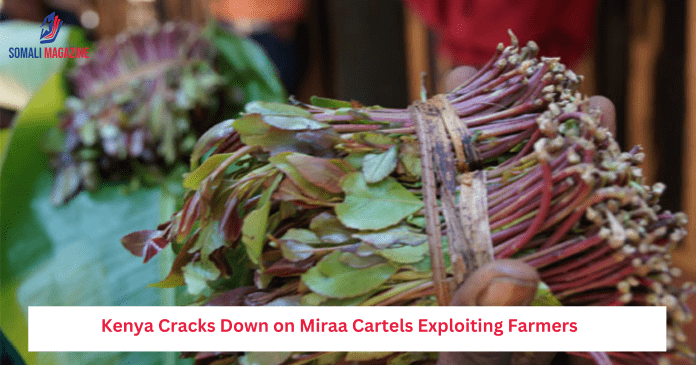Facebook Twitter (X) Instagram Somali Magazine - People's Magazine
Agriculture Minister Mutahi Kagwe enforces new farmgate prices to protect miraa growers from predatory traders amid rising export profits
Kenya’s Agriculture and Livestock Development Minister, Mutahi Kagwe, has come out strongly against miraa cartels that are taking advantage of farmers by buying their crop at very low prices and selling it at high profits—especially in Somalia.
Speaking in Meru County, a major miraa-growing region, Kagwe said some traders are buying miraa from local farmers for as little as 200 Kenyan shillings (about $1.50) per kilogram. Yet, the same product is later sold in Somalia for as much as 7,000 shillings (about $52) per kilo. He called this price gap “exploitative and unfair,” adding that it is not sustainable in the long run.
“It’s really sad to see how hard our farmers work, day and night, only for middlemen to make huge profits at their expense,” Kagwe said. “This kind of exploitation must stop. We are determined to make sure farmers get fair prices for their hard work.”
Government Sets New Miraa Prices
To stop this unfair treatment, the Ministry of Agriculture has now introduced new official prices that traders must pay when buying miraa directly from farmers. These new “farmgate” prices are meant to protect farmers from being taken advantage of.
The new prices are:
-
Grade 1 miraa: 1,300 shillings per kilo (previously 700)
-
Grade 2 miraa: 700 shillings per kilo (previously 350)
-
Alele variety: 1,000 shillings per kilo (previously 500)
These changes come after miraa farmers recently went on a one-week boycott of exports to protest the low prices they were being offered. In response, the government formed a committee called the Miraa Pricing Formula Committee under the 2023 Crops (Miraa) Regulations. This team looked into the actual costs of growing miraa and suggested new minimum prices to make sure farmers don’t lose out.
Farmers Still Struggling Despite New Rules
Even with the new pricing in place, many farmers in the Igembe area of Meru County say that some traders are still refusing to pay the set rates. As a result, farmers are stuck with large amounts of unsold miraa, which quickly goes bad after harvest. This is leading to big losses for them.
Kagwe warned that any trader who refuses to follow the new pricing rules will be removed from the list of approved miraa buyers. “If you’re not willing to pay the government-approved prices, you’ll be delisted,” he said. “Go trade in maize or something else instead.”
Why Miraa Matters to Kenya
Miraa, also known as khat, is a leafy plant that acts as a stimulant when chewed. It’s commonly used in East Africa and parts of the Middle East. The miraa industry is important to Kenya’s economy, contributing around 13 billion shillings (roughly $100 million) each year.
Somalia is Kenya’s biggest market for miraa exports, followed by Israel and the Democratic Republic of Congo. The large demand in these countries makes miraa a very profitable crop—just not always for the farmers themselves.
With the new pricing rules in place, the Kenyan government hopes to stop unfair trade practices, ensure that farmers earn what they deserve, and keep the miraa industry strong and sustainable.

